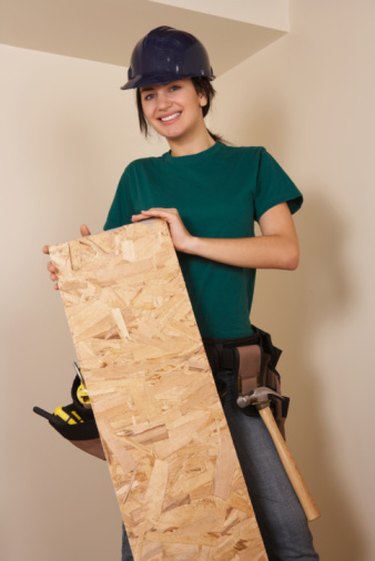
Plywood is a versatile type of wood commonly used in construction. The type of plywood that a builder chooses varies, depending on his preferences and the specifications of the structure. The Engineered Wood Association classifies plywood by grade.
Step 1
Look for a smooth, sanded surface if you are trying to identify A-grade plywood. A-grade plywood is void of knots. The manufacturer has repaired minor defects with a synthetic filler.
Video of the Day
Step 2
Look for small knots that may be as large as an inch when you're trying to identify B-grade plywood. B-grade plywood also has more manufacturer-repaired defects. Like A-grade plywood, B-grade also has a smooth sanded surface.
Step 3
Recognize C-grade plywood by the number of minor defects that have been repaired, coupled with knots that are as much as 1 1/2 inches wide. Defects may include split wood and cracks. The wood has been sanded, but the sanding has not removed discoloration, which looks slightly darker than the rest of the plywood.
Step 4
Study the complete lack of repairs in D-grade plywood. These pieces of wood are not sanded and may have several discolored patches. D-grade plywood also has knots and knotholes that are as wide as 2 1/2 inches.
Video of the Day